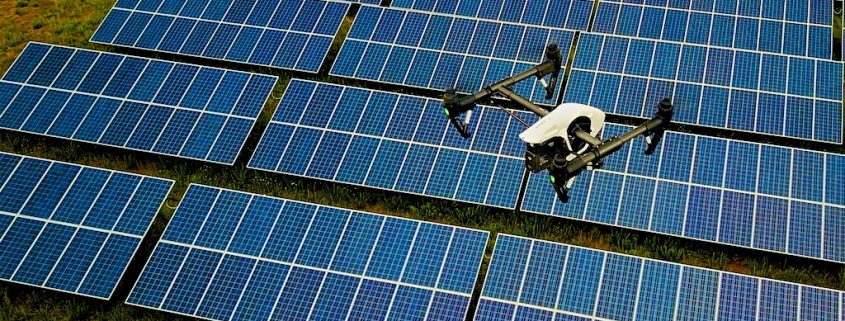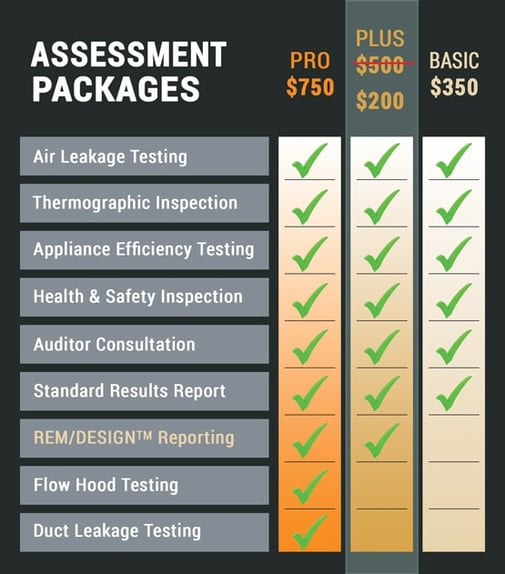How Energy Testing Can Cause A Lot More Sustainable Living Solutions
Energy screening is a vital tool for advertising lasting living. It uncovers inadequacies in power use within homes. Approaches such as energy audits and thermal imaging offer important understandings. Property owners can identify locations requiring improvement, from insulation to appliances. Addressing these inefficiencies can lead to significant energy cost savings. Many continue to be not aware of the complete potential of these techniques. What actions can people take to boost their homes and contribute to a more sustainable future?
Understanding Energy Screening and Its Relevance

Typical Techniques of Power Screening
There are numerous common approaches of energy screening that house owners can use to assess their power efficiency (energy testing). One commonly made use of strategy is the blower door test, which gauges the air leak in a home. By pressurizing the building, it identifies breezy areas that may call for securing. An additional technique is thermal imaging, where infrared video cameras identify temperature variations in windows, walls, and ceilings, highlighting insulation issues.Energy audits are also preferred, involving a thorough analysis of a home's power usage, usually performed by an expert. These audits may include reviewing home heating and cooling down systems, devices, and general energy intake patterns. Furthermore, clever power meters can give real-time data on power use, assisting homeowners comprehend their usage behaviors. Together, these methods provide valuable understandings, making it possible for house owners to make informed decisions about improving their energy performance and promoting sustainable living techniques
Identifying Power Inefficiencies in your house
Recognizing power ineffectiveness in a home is crucial for property owners aiming to decrease energy consumption and reduced energy expenses. Common locations to assess consist of insulation, home windows, and devices. Poor insulation can result in significant warm loss in winter months and unwanted warmth gain in summertime, making home heating and air conditioning systems function harder. Drafty home windows add likewise, allowing conditioned air to get away and raising power demand.Additionally, outdated home appliances frequently eat a lot more energy than their contemporary equivalents, further exacerbating inadequacy. Property owners need to likewise take into consideration the illumination system, as incandescent light bulbs utilize more power compared to LED options.Regular upkeep of cooling and heating systems is vital, as forget can lead to minimized performance. By methodically reviewing these aspects of a home, home owners can pinpoint locations requiring improvement. Attending to these ineffectiveness not just improves comfort however likewise adds to a much more sustainable way of living by minimizing energy waste.
The Function of Energy Audits in Sustainability
Energy audits play a necessary duty in advertising sustainability by offering property owners with a considerable assessment of their energy use. These evaluations identify areas where energy is squandered, enabling individuals to comprehend their usage patterns and make notified decisions for improvement. By exposing inadequacies in heating, cooling, insulation, and appliances, energy audits offer as a vital device for lowering general power demand.Furthermore, they facilitate the execution of energy-saving measures, such as updating insulation or installing energy-efficient illumination, which can significantly reduce utility costs and reduce carbon impacts. The insights acquired from a power audit encourage home owners to prioritize sustainability in their living settings. As more households engage in this procedure, the cumulative influence contributes to wider environmental objectives, cultivating a society of power consciousness and duty. Ultimately, energy audits are foundational to progressing lasting living remedies, benefitting both specific house owners and the setting at large.
Cutting-edge Technologies for Power Efficiency
As homeowners significantly seek to improve their energy efficiency, cutting-edge modern technologies are emerging to support these endeavors. Smart home systems, equipped with sensing units and automation, allow home owners to keep an eye on and control energy consumption in real-time. These systems can readjust heating, illumination, and air conditioning based on occupancy, thereby decreasing waste.In addition, improvements in energy-efficient home appliances have actually made substantial strides. Gadgets such as power STAR-rated refrigerators and washing machines eat much less energy while giving perfect performance. In addition, the integration of eco-friendly power resources, like photovoltaic panels and wind turbines, enables property owners to create their own power, lowering dependence on nonrenewable resources.Building products have likewise evolved, with alternatives like protected energy-efficient home windows and concrete kinds adding to decreased energy loss. With each other, these ingenious modern technologies not just improve power effectiveness yet likewise promote a more lasting living environment, equipping house owners to make impactful choices in their power usage practices.
Long-Term Perks of Lasting Living
While many might view sustainable living as a trend, its long-term benefits expand much beyond plain lifestyle options. Accepting sustainable methods leads to substantial reductions in carbon impacts, adding to a healthier earth. By reducing source usage and focusing on renewable energy, individuals and areas can experience lower energy expenses. This economic alleviation can enhance financial security with time, permitting for reinvestment in various view other vital areas.Furthermore, lasting living fosters more powerful area ties as individuals team up on regional campaigns, advertising social communication. Wellness benefits likewise emerge, as minimized air pollution and boosted environment-friendly areas boost air top quality and general wellness. Furthermore, future generations will acquire a more sustainable environment, guaranteeing the availability of all-natural resources and biodiversity. Eventually, the long-term advantages of sustainable living incorporate ecological, financial, and social dimensions, offering a compelling situation for individuals to adopt and maintain these practices for the greater good.
Steps to Execute Energy-Saving Solutions
Applying energy-saving options starts with a thorough evaluation of power consumption patterns to recognize locations for improvement. As soon as these patterns are recognized, individuals can identify energy-efficient upgrades that straighten with their requirements. Continuous surveillance and adjustments to energy use assurance that these remedies continue to be effective in time.
Examine Power Consumption Patterns

Examining power intake patterns is an essential step toward determining efficient energy-saving options. By methodically tracking usage throughout different times and people, companies and appliances can determine locations of excessive consumption. This evaluation can disclose peak usage periods, allowing a far better understanding of when power demands are highest. In addition, analyzing patterns enables comparisons between similar devices, highlighting those that operate much less efficiently. Data collection methods, such as smart meters and energy audits, provide useful insights right into total power use. In addition, determining trends over time can help in acknowledging seasonal variants and shifts in intake routines. This foundational expertise is important for creating targeted techniques that advertise lasting living and decrease general power expense.
Recognize Energy-saving Upgrades
To efficiently execute energy-saving services, recognizing energy-efficient upgrades is important for both services and home owners. This procedure starts with a complete examination of existing systems, including heating and cooling units, insulation, and home appliances. Upgrades may encompass installing power STAR-rated home appliances, enhancing insulation, and utilizing energy-efficient windows. In addition, carrying out wise thermostats can optimize heating and cooling down timetables, lowering energy consumption. Shifting to LED illumination is another effective measure, as it takes in considerably much less power than standard bulbs. Additionally, checking out sustainable energy alternatives, such as solar panels, can supply long-term cost savings. Eventually, prioritizing these upgrades not just adds to decreased energy expenses but also fosters a commitment to sustainability, benefiting both the atmosphere and future generations.
Display and Adjust Use
Tracking and readjusting power usage is crucial for optimizing the advantages of energy-saving solutions. Consistently assessing energy intake patterns permits companies and individuals to go to this website identify areas for improvement. By using wise meters and energy monitoring systems, customers can track real-time usage and discover any kind of anomalies that may show inefficiencies.Adjusting behavior, such as switching off lights and unplugging unused tools, even more enhances energy cost savings. Furthermore, organizing home appliances to run during off-peak hours can substantially lower costs.Conducting routine power audits guarantees that executed solutions remain effective gradually. By proactively participating in surveillance and changing techniques, people can enhance their power performance, contribute to sustainability efforts, and inevitably lower their environmental impact.
Frequently Asked Inquiries
Exactly how Much Does an Energy Audit Typically Price?

Can Power Testing Help In Reducing Energy Costs?
Energy testing can noticeably minimize energy bills by recognizing inadequacies in a home's energy use. By addressing these problems, home owners typically experience lower intake and expenses, resulting in more economical energy monitoring and improved financial savings.
What Qualifications Should an Energy Auditor Have?
A power auditor must have appropriate accreditations, such as RESNET or BPI, along with experience in building scientific researches. energy testing. Solid analytical abilities and expertise of energy performance techniques are crucial for conducting precise analyses and offering effective referrals
Are There Government Incentives for Energy Efficiency Upgrades?
Government incentives for power effectiveness upgrades usually exist, including tax refunds, credit scores, and gives. These programs aim to urge services and home owners to buy energy-saving technologies, inevitably advertising ecological sustainability and reducing total energy intake.
Just how Frequently Should I Conduct Energy Testing in My Home?
Power testing must ideally be conducted each year to determine ineffectiveness. However, home owners may take into consideration more constant evaluations after significant remodellings, adjustments in energy expenses, or if uncommon drafts or temperature variations are noticed within the home. Energy screening allows the evaluation of how well a home makes use of energy, pinpointing areas where waste takes place. Identifying power ineffectiveness in a home is important for home owners aiming to lower power intake and reduced energy costs. Power audits play an essential duty in promoting sustainability by giving view publisher site home owners with a substantial evaluation of their power usage. By revealing inadequacies in heating, cooling, insulation, and home appliances, power audits offer as an essential tool for decreasing general power demand.Furthermore, they help with the execution of energy-saving measures, such as upgrading insulation or installing energy-efficient illumination, which can considerably reduce energy costs and lower carbon footprints. Energy testing can significantly lower utility expenses by identifying inadequacies in a home's power usage.